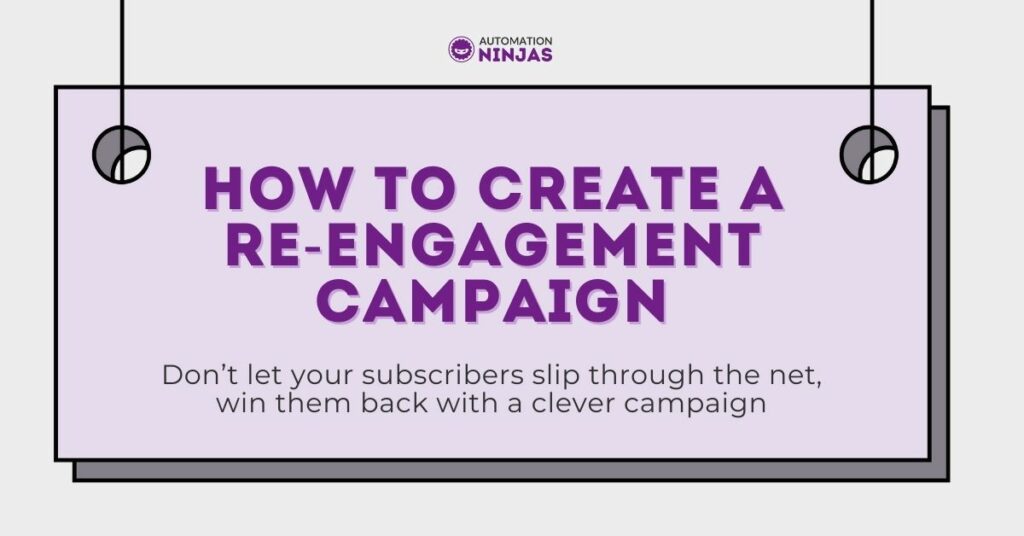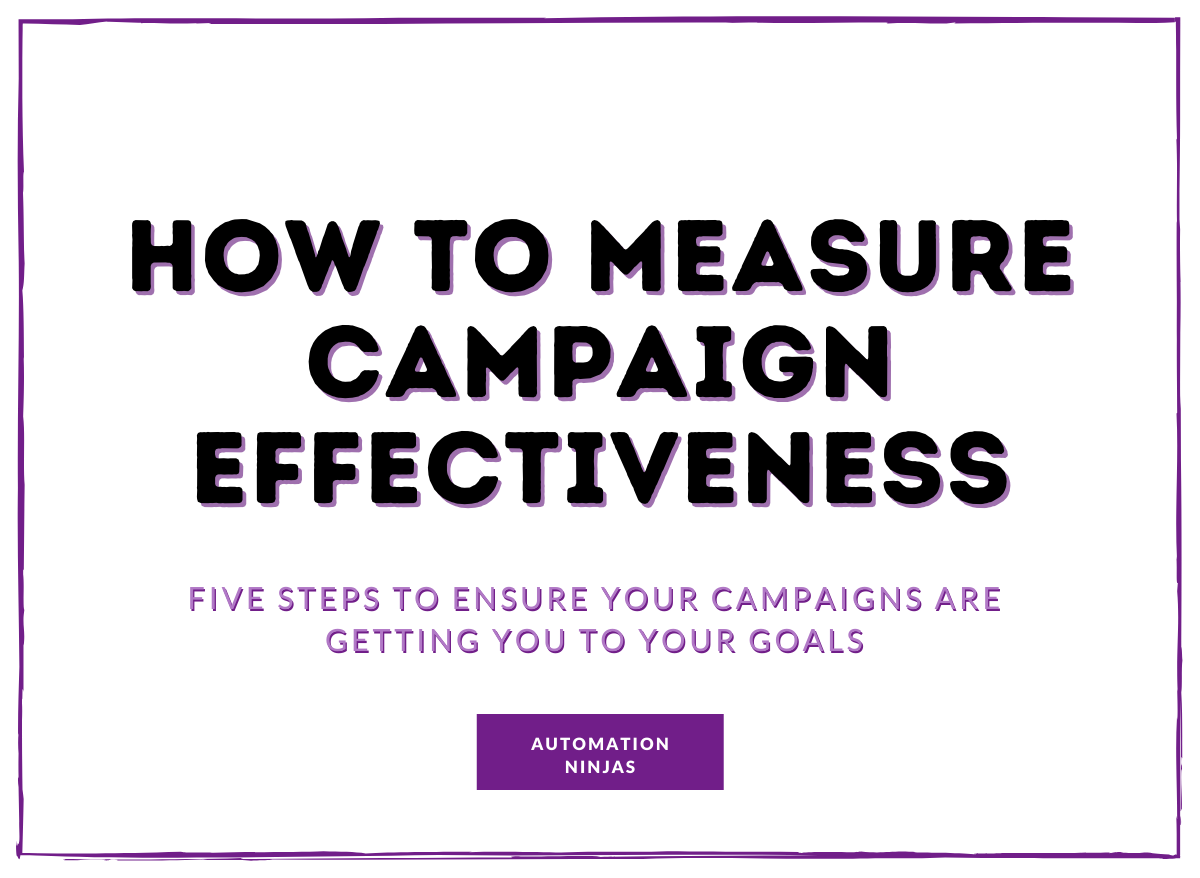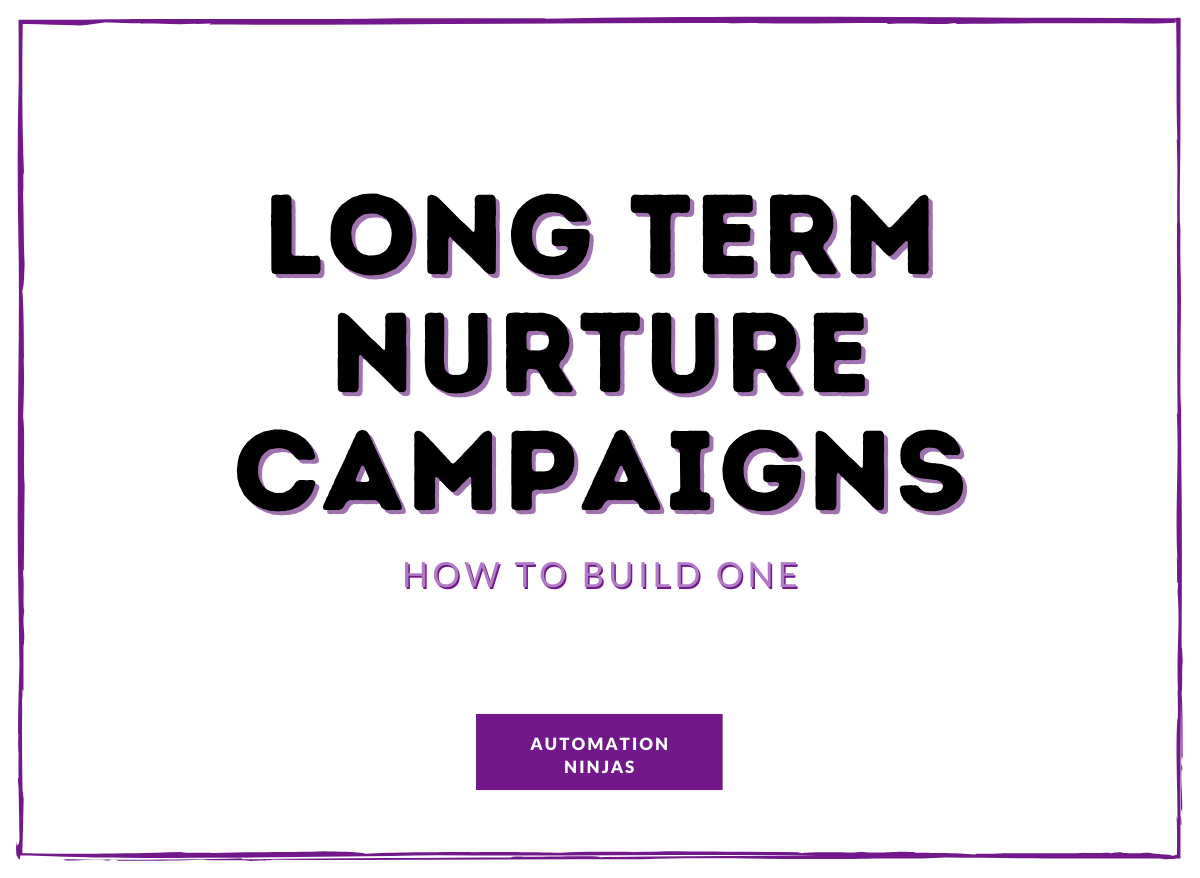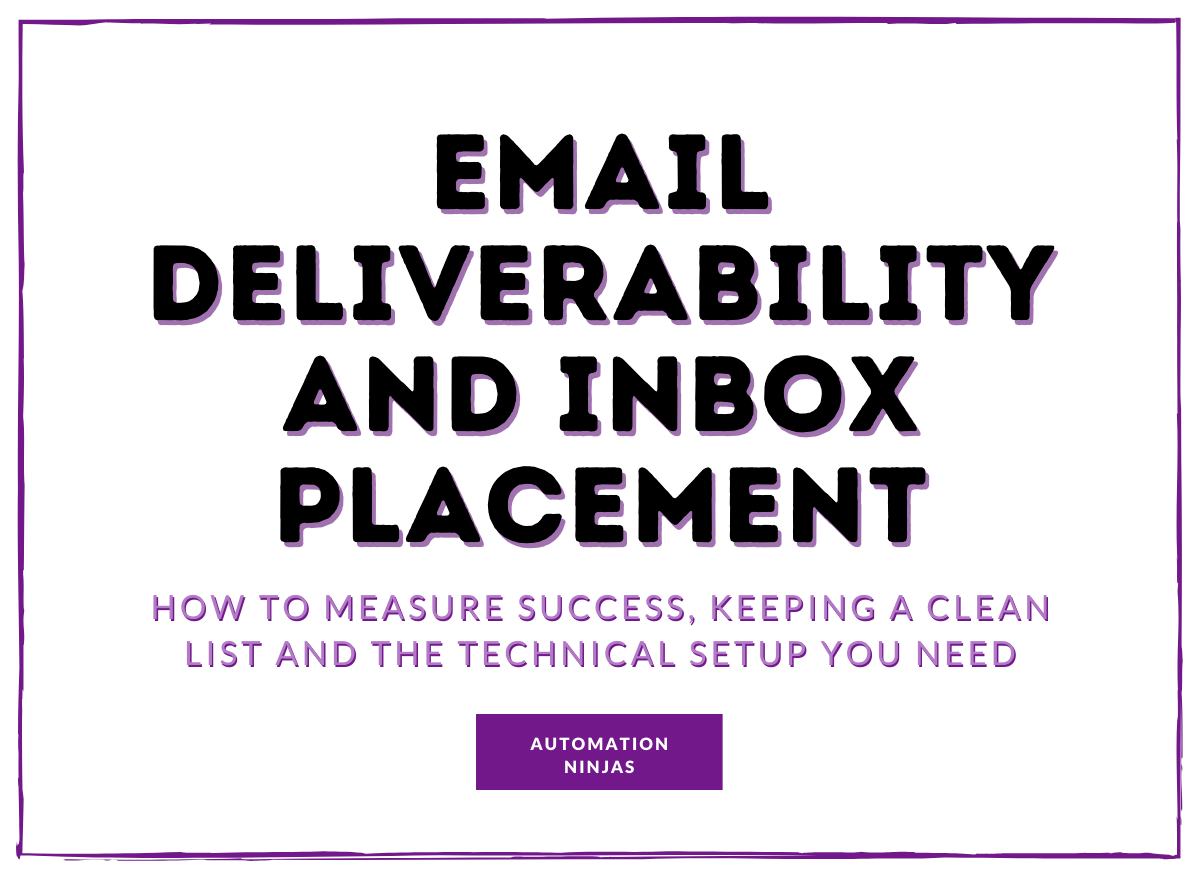Author: Ashton Oldham
Hey there, I'm Ashton, the Content Ninja with a penchant for creativity! I'm all about crafting killer customer-focused content and sprinkling it with that special sauce that makes brands pop. Teaching, strategising, organising (people and projects), and spicing up collaborations? That's my jam!
Businesses just like yours have to deal with list attrition every year. In fact, on average we lose 25-30% of subscribers annually. That sucks right? Well, fear not, I’m going to give you something that will help combat this issue, and that my friend, is a re-engagement campaign.
Let me make something clear from the get-go. In this instance, attrition doesn’t only mean that people are unsubscribing.
Oh no, this counts for all of those who have “emotionally unsubscribed”. They are still on your list and receive all your emails, but they are hanging out in limbo land, choosing not to engage with the content you are sending.
These rascals are having a bad impact on your sending reputation.
We want people to make up their minds. Either they want to consume our content, or they do not. (Preferably the former, of course.)
Before we jump into the content of this post, I want to remind you why engagement is so important.
Here are a few of the key reasons:
You get to know your subscribers better, and they learn more about you
If they are a prospect you can turn them into a warm or even hot lead
If they are a customer, you can keep the relationship at an optimum level.

Maybe don’t refer to your list as Klingons though… at least not to their faces.
So, what are we going to get into throughout this blog post?
- Why you might need a re-engagement campaign
- Reasons your list may not be engaging with your content
- How to create a re-engagement campaign
- Next steps, further resources, and expert support.
Ready to hit the ground running? Get your strategic cap on, we’re going to activate those unengaged contacts!
Why do I need a re-engagement campaign?
First things first. Every marketing activity should be underpinned by a reason why you are doing it in the first place.
You need clarity on your problem and a solid strategy around how you are going to solve that problem. So, let’s take a look at some of the things a re-engagement campaign can solve:
- Some or most of your list isn’t engaging with your emails or other content
- You have engagement but a clear lack of conversions (not necessarily sales)
- Your campaign delivery, opens or click metrics are poor and unbalanced
- Lost or former customers are still on your list and you want to win them back
You may have ticked all of the above boxes, and that’s fine. But you need to focus on one goal. A campaign that tries to do too much, more often than not, sinks like a lead balloon.
6 reasons why your list is unengaged
1. You aren't delivering what they signed up for.
This is basically breaking a promise, which is an easy way to lose friends. If you’ve offered something to your subscribers, such as tips on how to do something, regular blogs or e-books, discounts… whatever it may be. Then you don’t actually deliver those things, clearly, they are going to think you a bit of a liar.
Most likely, they will become disengaged - if they haven’t unsubscribed by now.
2. What you are sending them isn't of value.
This is a BIG one, and point number 3 comes very much into this category. People won’t want to consume content that isn’t valuable to them.
Details about your company, how awesome you are, or information on your products isn’t going to rock one's socks off. Whereas, content that educates them, helps to solve a problem, or provides the audience with quick wins - no strings attached - is valuable.
It must also speak to them. No, not literally. But include video, podcasts, etc. by all means. What you put in your emails should be relevant, and it should be something that they can relate to. Perhaps you are speaking to their values, wants and desires, interests, or beliefs.
Make it about them, not about you.
3. All you’ve been sending them is sales, sales, sales…
Yuk. As I said, this relates to the point above. Sales spiel isn’t going to be valuable… Unless you:
- Know they are at the right point in their automation journey or awareness stage for sales (Bottom of Funnel, Solution - Most Aware).
- Create content that sells but in a customer-focused way. Make them the hero!
Don’t be sending sales emails to people who aren’t engaging with content that tells you they are ripe for it. You’ll get a bad rep and likely push them further and further away.
4. Your communication isn’t consistent.
As my partner says about everything in life (but mainly when I moan about exercising), consistency is key. And, like me with my fitness, you may have a million excuses to throw at it.
There’s never enough time in the day. Other things always take priority. You don’t have the tools to support yourself. Blah, blah, blah.
But are these really roadblocks? I’m not saying they aren’t valid, but they shouldn’t stop you from moving forward and doing what should be done for your audience.
Being more consistent will be noticed. And it will have a positive impact on your engagement. For example, we send long-term nurture (LTN) emails to everyone on our list each week, sharing a link to our most recent blog. (Maybe that’s how you arrived here.)
People get so used to getting this email, and because it’s focused on providing valuable content, many of them are sat waiting (in keen anticipation) for it to arrive in their inbox.
5. The call to action (CTA) is unclear
Every email - actually, every piece of content - needs a call to action. Your reader should have a clear and relevant next step to take.
When you create content you should have an explicit goal in mind. Do you want the reader to download something? Perhaps you want them to direct to a website landing page? Maybe you want them to contact your sales team?
Whatever it is, ensure your content leads to that CTA. It shouldn’t come as a surprise to them, nor should it feel unrelated to what they are consuming, or where they are in their buyer journey.
Focus on one key CTA and light the way. Give them a reason to click!
6. You didn’t have a right to email them in the first place.
This is a bit of a bonus one…
Now, I know what you’re thinking. But, this happens… businesses buy contact details from other businesses. Or, they have a team in-house trawling the net for potential prospects and manually adding them to their CRM system.
This is bad. In B2B purposes, many would try to argue legitimate interest… That doesn’t really work here. Please, if this is you, put the effort in and get your contacts the right way 🙂

Yeah, that’s not guna hold. You need a re-engagement campaign.
How to create a re-engagement campaign
Have you ever lost touch with a friend, perhaps you’ve seen them post on Instagram or Facebook, and thought I should probably reach out to reignite the relationship, but I’m a little scared?
At some point you have to make the decision… do you want this person in your life? Yes? Well, it’s time to make the first move.
The same can be said for your subscribers. And, let’s be honest, it’s really down to you to reach out. It can be as intimidating…
What if they say no and cut me out forever, what if I annoy them, what if… what if….
It’s time to rekindle that relationship and show everyone on your list that you care.
You need to create a re-engagement campaign.
But how?!
Step 1: Decide on your goal
Every campaign needs a goal. A reason to create it in the first place.
The overall goal is of course to re-engage your list. But, that’s high-level. You have to choose what the parameters are for a subscriber to be successfully re-engaged.
Are you aiming for a full list cleanse?
If you want to get super clear on who genuinely wants to be part of your community, then it’s time to ask them. That’s your call to action. By them choosing to remain, via opt-in confirmation, they are committing to engaging with your brand. Anyone who unsubscribes, or doesn’t opt-in, is removed.
Maybe you want to get clearer on what the contact is interested in?
Sometimes engagement lulls because you're not giving them what they want. Oftentimes, businesses offer an “update your email preferences” option. If you choose to do that, be crystal clear on the options.
Company news, blog notifications, free resources, product information (which could be split out even further…), offers, and exclusives… It’s up to you. Try not to bombard them with options, as this will be more work for your marketing automation. But, the beauty is it can all be automated - wahoo!
Do you want to learn more about your contacts as well as get them re-engaged?
That’s where your segmentation strategy comes in.
Decide what it is you want to learn about them - it must be meaningful and useful to you. Then, you need to choose relevant, high-value content/landing pages that are specific to each segment. Include these in your campaign and make sure to make them sound nicely click-worthy. Pushing the benefits or pain points works well here.
Some businesses like to be more explicit, preferring to openly ask the subscriber to self-segment. This isn’t as effective. It’s also not a great idea for those people that are unengaged. You need to build a bit of rapport with them before you start asking for something that can feel kind of personal.
Would you like some specific actions to take place?
Aside from being more engaged with content now and in the future, do you want to get your subscribers to do or consume something in particular?
This could be booking a call, consuming a lead magnet, use of a coupon, opting into your newsletter, joining a webinar, sharing with a friend, following your social media account, or even - if it feels acceptable - visiting your shop to make a purchase. The last one should be used with caution, an unengaged contact will likely only buy if they are being incentivized to…
Remember, don’t try to do too much with your campaign. Set clear goals and objectives - you can have different campaigns for different segments if that feels right! Speaking of segments…
Step 2: Create your segments
First, you need to do some segmentation. If you haven’t already set up tags (or similar) to segment your unengaged contacts - this may be a bit of a manual task.
You’ll need to review your list to see who is engaging - opening AND clicking links to view your content, or even making a purchase (e-commerce) - and who is not.
Focusing on the most recent activity, think about splitting them up between 1 month, 3 months, and 6 months or more. The latter will be less likely to re-engage, it’s possible that they just aren’t the right type of customer, and have no interest in what you are offering. You can’t win them all!
It’s also important to note where each subscriber came from. That could be a lead magnet, landing page, purchase, social post, etc. This will help you gain context around why they subscribed in the first place.
You can go as deep as looking at post-purchase history. Clarity on what products or services a subscriber was interested in could help you segment them even further.
It’s always a good idea to create standard segments so that you can really personalise your campaigns. Splitting them up by age range, location, gender, or other meaningful demographics. Even more powerful if you can get the data, would be psychographics and behaviour.
Learn more about customer segments and profiling here: What is customer profiling?
Not enough data for smaller segments and personalisation?
If you don’t have a deep set of data to hand, don’t panic. You can still send a campaign to your group of unengaged contacts, but your copy maybe a little more generic than personalised. If that’s the case, then this is the perfect opportunity to include some new tags to segment your list from their interaction with this campaign.
Always look for opportunities to learn more about your subscribers!
I know this all sounds like it requires some elbow grease… and, it does, but you’ll be thankful in the long run 🙂
Step 3: Design your campaign flow
No matter what marketing automation platform you use, you should be able to replicate a flow similar to what I’ve popped down below. Remember, depending on your goals and objectives, your actions within the flow will differ.

It’s key when you are designing your campaign that you include certain trigger tags. And, it’s down to you to how in-depth you want to go.
Want help with your tagging strategy? Get in touch!
Step 4: Create your campaign
This is all about the writing and designing of your campaign. You have your flow, you now need to fill it!
Grabbing the attention of unengaged contacts can seem like a tough feat. But, let’s break it down into 5 main focus areas to make it as easy as possible:
- Catchy subject line - something enticing to get them to open the email.
- Customer-focused content - this is about them, not you, remember that as you write.
- Remind them of the value - reinstate the value of being a subscriber and introduce something new.
- Dangle a carrot - offer some sort of incentive to get them to commit (valuable content/coupons).
- Create FOMO - push on their pain points and what they’ll miss out on by not engaging.
- Strong call to action - ask them to take action for something relevant and easy.
Don't forget, you have more than one email in this campaign… so don’t try to do everything in email 1. That being said, the first email is going to be the most important. If that one is a flop, it’s likely the rest will fall short too.
Don’t be desperate. You don’t need every subscriber. You just don’t want to lose the ones who are your ideal customer in the making.
Provide an obvious opt-out - and don’t make it sound like you’re scared. Getting people to choose to actively unsubscribe if they are simply not interested, will be better for your email deliverability and performance metrics in the long run.
Get help writing and implementing your re-engagement campaign
We are experts in building well-engineered campaigns in multiple marketing automation platforms. If you are a little unsure about how yours works, or perhaps you aren't clear on tagging and segmenting, we would love to lend a hand.
Maybe you need a bit of support with writing engaging content... It's not always easy to write something that truly captures and converts an audience, but the Ninjas have many years and a variety of experience when it comes to creative copywriting.
If you're interested, all you need to do is hop over to our contact form and let us know what you need help with. We'll soon be in touch to have a chat about the details and how much it will cost, then the decision is up to you! Contact the Ninjas >>>





